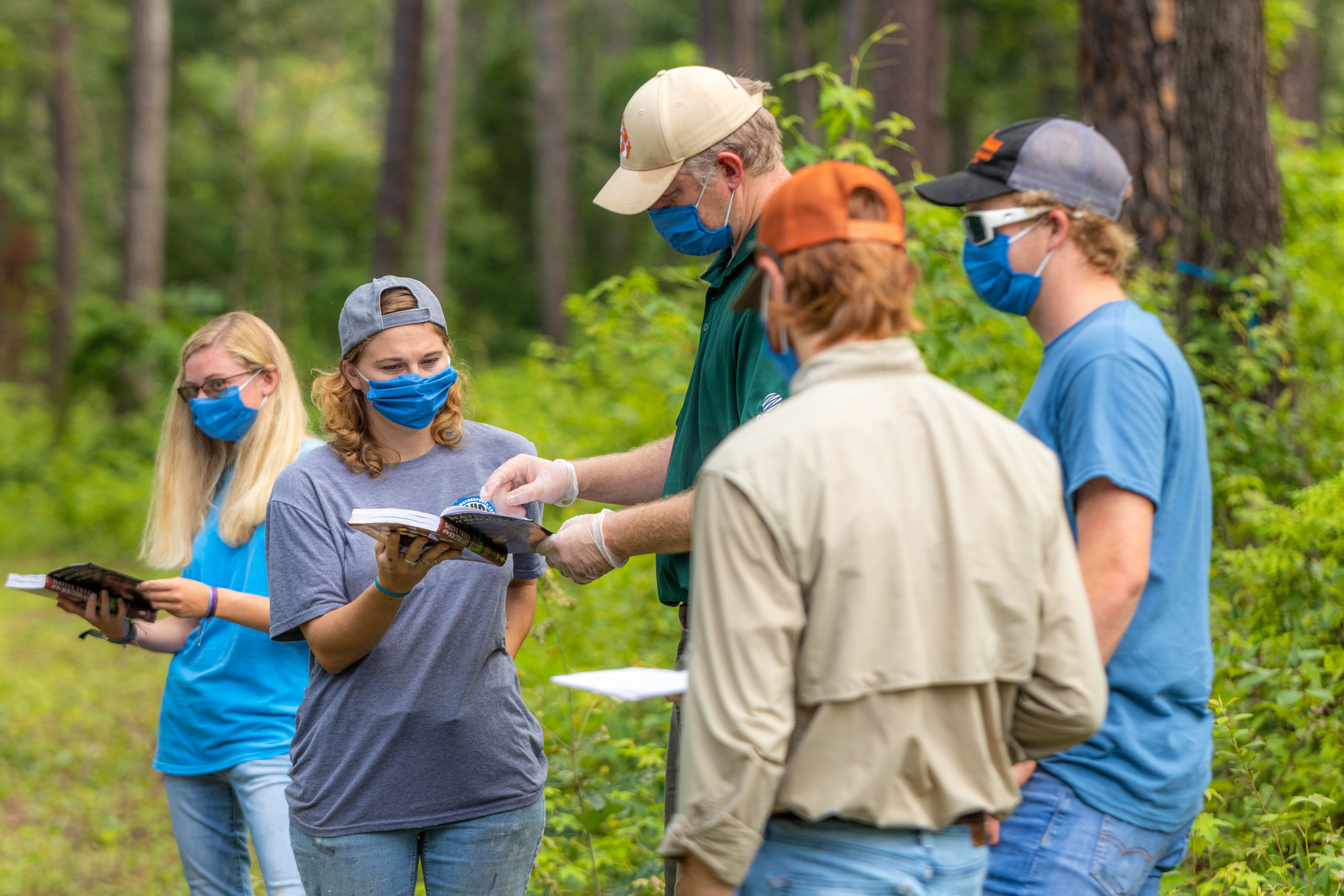When Dr. Jeremy Green took the helm of Southern Regional Technical College (SRTC) – Thomasville’s Land, Forest, and Wildlife (LFW) Management program in 2019, the program was in great shape. Situated in the nature-lover’s paradise of the Red Hills, the program was building robust partnerships with local hunting plantations, nature preserves, and state agencies in South Georgia and North Florida. At the same time, LFW Management consistently put up impressive enrollment, graduation, and job placement numbers. The campus’s 30-acre forest classroom, however, was in need of attention. The thickly wooded outdoor learning lab had become choked by understory overgrowth, pests, and deadfall from recent hurricanes. A few weed-tangled paths wound through the dim forest, but most of the woodland was too congested to allow for a decent line-of-sight, much less scientific study of native wildlife.
In the autumn of 2019, Dr. Green and LFW students took part in a Department of Natural Resources (DNR) Quail Covey census at the nearby River Creek Wildlife Management Area, but they ended the early morning count without hearing the bobwhite quail’s namesake call even once. The quail were not only missing from River Creek. Georgia’s quail population has declined in the state by more than 85% since the 1960s, due in large part to the loss of the kind of habitats that support a healthy wild quail population. Restoring healthy native habitats across Georgia’s landscape benefits quail, numerous songbirds, rabbits, wild turkey, deer and many other wildlife species, according to the Georgia DNR.
It became a mission of the program to restore the campus’s own neglected mixed hardwood-pine forest habitat, which includes a number of mature longleaf pines. Under Dr. Green’s supervision, the students rolled up their sleeves and got to work. They diagnosed damage and destruction, removed downed trees, cleared out the underbrush, flat mowed between trees, and in the spring of 2020, conducted a restorative prescribed burn in the forest. “I am proud of the ownership my students have taken of this forest,” said Dr. Green. “They have applied our classroom lectures, their practical experience, and their combined effort to truly bring this habitat back to life. This kind of conservation stewardship in action is exactly what our program was designed to promote.”
By the late spring and early summer of 2020, signs of new life began appearing beneath the soaring canopy of longleaf pines. Easter Lilies pushed through the charred ash of the forest floor. Songbirds, butterflies, and bees flitted through the now uncluttered stand of trees. Whitetail deer nibbled on the grasses, forbs, and fruits of the forest. Filtered sunlight now landed on the fresh, healthy leaves of young shrubs and saplings. In June of 2020, the Dendrology class was examining trees when they spotted something that had not been observed in the forest for several years: a mating pair of wild quail. Watching them meander through the low underbrush, Dr. Green said the class was elated to witness the fruition of their labors. “It is very exciting to see our hard work paying dividends for wildlife. This is why forest conservation matters.”
In the future, Dr. Green says that incoming students will continue the work of the Class of 2020. “Healing the forest enough to support native wildlife was an exciting result after one year’s labor, but it will take at least a decade of student work to get our forest to where it needs to be.” He is looking forward to his program nurturing a more open, grassy understory with various generations of longleaf pines, hardwoods, and shrubs to encourage an even more diverse ecosystem in the woods. Future students will be gaining valuable, applicable experience, as working in the College’s forest lab is a microcosm of what these students will experience in their careers in wildlife and forest management.
